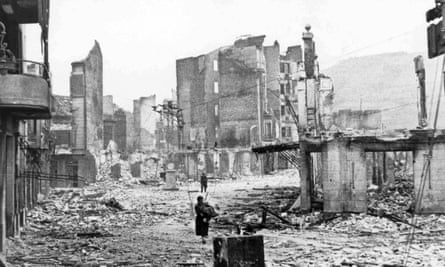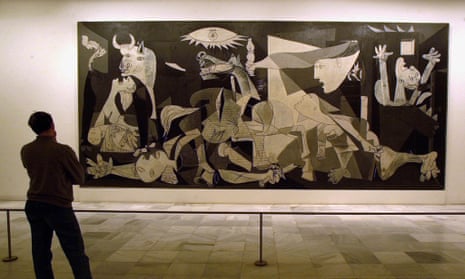Spaniards are beginning to show impatience and irritation over the delay by New York’s museum of Modern Art in giving up the Guernica, the celebrated Pablo Picasso painting inspired by the Spanish Civil War.
In New York, museum officials insist that they are faithfully following the wishes of the late Spanish painter. During his lifetime, according to the officials, Picasso decided that the wall-size painting would go to Spain only after his French lawyer, Roland Dumas, determined that Spain had become democratic enough to receive it.
So far, almost three years after the death of General Franco, and more than a year after parliamentary elections, Mr Dumas has failed to give Spanish political life his blessing. Until he does, museum officials say, the painting stays with them. There is confusion, however, about the details of Picasso’s instructions and the precise legal role of Mr Dumas. As a result, some Spaniards are suspicious of the New York museum’s intentions.
Early in August, José María Carrascal, the American correspondent of the Madrid newspaper ABC, concluded that the museum “appears disposed to keep the painting as long as possible.”
“When asked about the subject,” Carrascal went on, “museum officials say there’s nothing new and, ‘we are waiting for a legal resolution of the question,’ and other comments in that vein. But in its publicity campaign to attract more visitors, the museum lists the Guernica as one of its main attractions, and everything points to the conclusion that the museum will give the painting away only when left with no other alternative.”
At stake is a painting that is perhaps the best-known work of art of the 20th century and the centrepiece of the New York museum’s enormously rich collection. In the minds of art lovers, the painting is as closely associated with the New York Museum of Modern Art as the Mona Lisa is with the Louvre.
The painting also has great political significance, and that is probably why Picasso wanted it to belong to the people of Spain some day. The painting commemorates the destruction of the Basque town of Guernica on April 26, 1937, by planes of the German Condor Legion which fought for Franco during the war. The act, which shocked world public opinion, was regarded as the first attempt in history systematically to destroy an undefended town from the air and thus terrorise the civilian population. Perhaps 1,000 people were killed.

Guernica was eventually received by Spain on 10 September 1981.

Comments (…)
Sign in or create your Guardian account to join the discussion